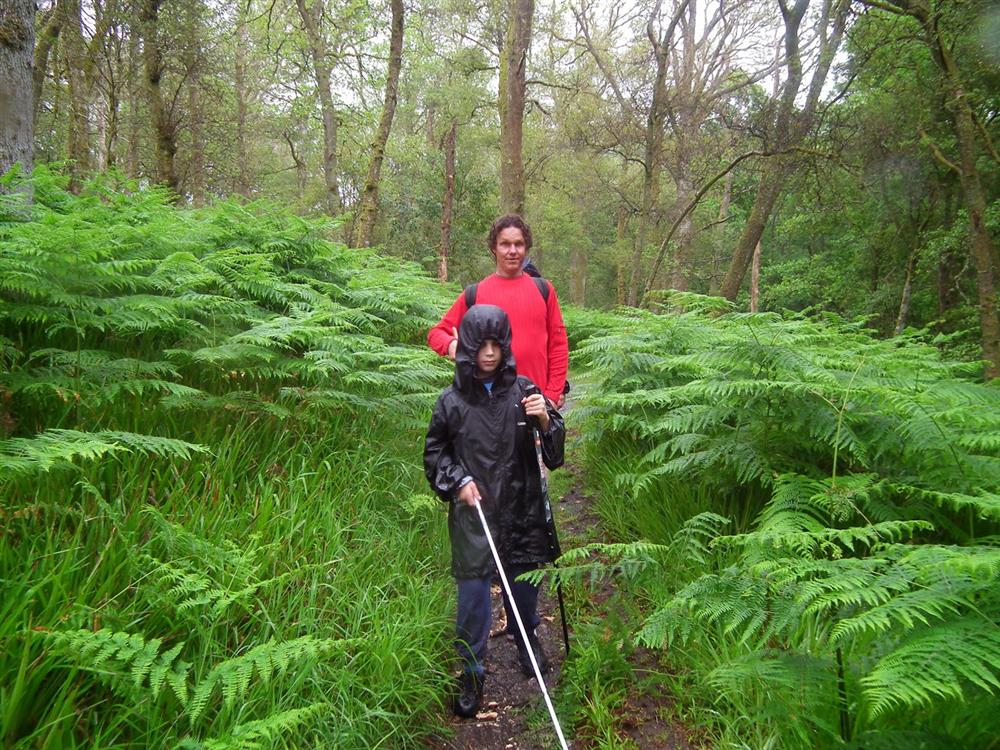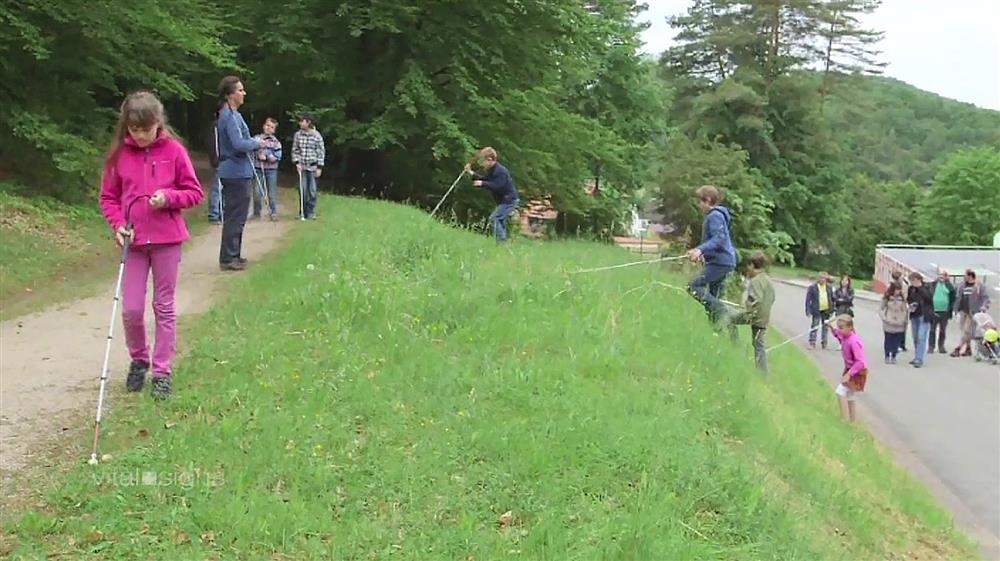Teaching the clicking of tongue technique to navigate
- Solution
- Flashsonar
- Organization
- World Access for the Blind
- Country of Implementation
- United States of America
- Region
- North America
- Start Year
- 2001
- First published
- 31.01.2018

Solution details
People
“Samuel picked up the clicking quite easily. We’re so proud and hope he’ll be able to choose the quality of life he wants, rather than having it mapped out for him.” Jackie Oldridge, speaking of her seven-year-old son
World Access for the Blind (WAFTB) is a non-profit organization located in Placentia, California, USA, which works to strengthen the physical, mental, and personal development of the blind and people with all ability challenges. The organization has developed Flashsonar, a technique that helps the visually impaired to use their own ‘human sonar’ to perceive their surroundings by using a clicking-of-tongue technique. Since 2001, WAFTB has provided individual and group trainings to more than 2,000 students.
Problems Targeted
People with visual impairments or low vision often face difficulties self-navigating outside well-known environments, e.g., while traveling or simply walking down a crowded street.
Solution, Innovation and Impact
World Access for the Blind trains blind and visually impaired persons the technique of human echolocation and calls its training Flashsonar (quite like the navigation of bats). The technique allows people to navigate using tongue-clicking and by responding to the reflected sound from their surroundings. The tongue click allows the ear and brain to work together to construct a 3-D image from reflected echoes of objects. The organization teaches people of any age, background, or ability, and it believes that anyone can learn to develop functional images of their environment to find more freedom by ‘seeing’ in a new way. Additionally, the organization has developed new ways to use the long cane, which is more effective and easier to learn than the cane techniques traditionally taught to blind people. Innovations include the handshake grasp, which reduces the wrist and hand pain that blind people often suffer from when holding a cane in the traditional way; as well as the ‘feather touch’, whereby the tip of the cane does not drag or scrape along with its full weight, but instead glides lightly over the contours of the ground. With Flashsonar, World Access for the Blind is rewriting the mobility instructor certification practice, a professional certification to demonstrate professional competency that supports quality service delivery to persons with vision impairments. For some employment opportunities this certification is mandatory in the United States and other countries. -. Since 2001, WAFTB has held 85 professional development workshops on Flashsonar and the long cane for more than 3,000 service providers in 39 countries.
Funding, Outlook and Transferability
The project has expanded internationally by using the ‘training-of trainers’ model, which prepares blind trainees to instruct other blind or visually impaired persons. Further, the organization has published a textbook and a set of training materials to help students, families, and other instructors develop their own freedom with less dependence on local institutions. Flashsonar’s funding comes from public grants (10 per cent), private donors and fundraising (25 per cent), and such project income as student tuition and service fees from agencies (65 per cent).
Media
Life Story
THE STORY OF DANYL, USER OF THE TONGUE
“A few weeks later I was using the little vision I had, together with the white cane and echo location.”
Dear World Access for the Blind, My name is Danyl and I am 12 years old. I was a normal kid, running around with my friends and biking through the nearby hills, until one day, when I was eight, I woke up in the middle of the night. It was hard to breathe so I woke my dad and he phoned an ambulance. The last thing I said was: “I’m dying, dad! I’m dying!” I was on life support for several weeks, and for months afterwards I was completely blind and couldn’t walk at all. The first week of school in August 2007, three years later, you brought Kerrie and Alex to my primary school. They were blind too, and I think you were training them to be teachers like you. By then, I still didn’t really know a lot about what had happened to me. When you guys first told me what you were about, I honestly thought you were joking. But by the end of the first day, I thought what you guys taught me was brilliant! A few months later, when you and Alex came back to my school, I had practiced my click and was able to do it properly, and I was using the hiking stick and learning the basics of the white cane. I found it really hard at first mixing all three – clicking, walking with the hiking stick, and using the cane. But when you and Alex returned again the next summer, I was surprised by how much walking and clicking we practiced, and I found it became easier. A few weeks later, I was a lot more confident. When I first came around in the hospital and I really wanted to walk and see again, I didn’t think that all of this would be done for me. Now I definitely think I will be able to walk again and know my ability to see is improving, so I am really, really happy with all the help that I’ve received.
Related information
- Connections
- 2
-
Organization
- People
